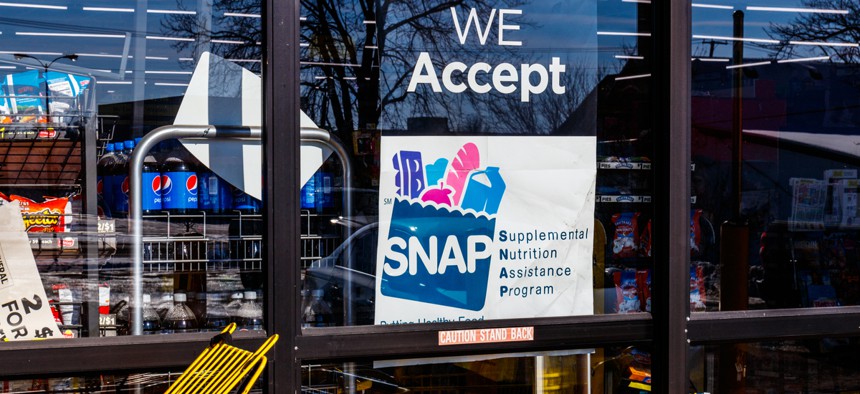Food Stamp Recipients in Some States Would Be Hit Harder than Others by Trump Proposal, Analysis Says

The policy's impact would be disproportionately felt by households in the Midwest, Pacific Northwest and Texas, researchers found. Shutterstock
A policy analysis also found that a proposed change to food stamp eligibility rules would affect more people than federal estimates had originally anticipated.
Food stamp recipients in the Pacific Northwest, Midwest and Texas would be hit hardest by a Trump’s administration proposal to change the way states determine who is eligible for benefits, according to analysts.
“Under the proposed rule, millions of vulnerable families will have an even harder time making ends meet and putting food on the table,” Dr. Richard Besser, president and CEO of the Robert Wood Johnson Foundation, said in a statement. “This research shows that this pain will be felt in states across the nation.”
The administration’s proposal, unveiled in July, would tighten eligibility requirements for some people who receive benefits from the Supplemental Nutrition Assistance Program (SNAP), also known as food stamps. Under current law, households that qualify for Temporary Assistance for Needy Families programs (which can include cash benefits, childcare assistance and job training) can qualify for benefits without having to meet federal income and asset requirements (they must still meet non-financial eligibility standards, including work requirements). The rule change would eliminate that broad-based categorical eligibility, which Trump officials categorized as a “loophole.”
“For too long, this loophole has been used to effectively bypass important eligibility guidelines,” said U.S. Secretary of Agriculture Sonny Perdue when the proposed change was announced. “Too often, states have misused this flexibility without restraint.”
The federal Department of Agriculture, which oversees the SNAP program, estimated this summer that 3.1 million people, or 1.7 million households, would lose their benefits under the change—roughly 9% of the program’s participants.
Researchers with the Robert Wood Johnson Foundation and Mathematica, a policy research firm, checked those numbers by comparing SNAP quality control data from 2016 to eligibility policies across the country. The resulting state-by-state impact analysis found that the rule change could have broader impacts than federal estimates anticipated, affecting up to 3.6 million people and 1.9 million households, according to the data.
The analysis found that in 20 states more than 10% of households currently on SNAP would lose eligibility under the change. That impact would be disproportionately felt by households in the Midwest, the Pacific Northwest and in Texas. In Wisconsin, for example, the analysis concluded 62,696 households (18% of the 357,240 households that currently receive benefits) would lose benefits, while 16% of households on SNAP in Washington (88,375) and Oregon (66,622) would be affected.
Texas would see the biggest impacts from the proposed change. In that state, 233,195 households (15%, or 389,342 people) would lose their access to nutritional benefits—the most in the nation, according to the analysis. Roughly three quarters of those households (171,696) live in poverty. More than a quarter of those households (65,983) include children, and nearly half (108,230, or 46%) include an elderly adult.
“Eliminating [broad-based categorical eligibility] would mean millions of people currently receiving SNAP benefits would become ineligible,” Sarah Lauffer, a senior research programmer at Mathematica, said in a statement. “This simulation gives policymakers insight into the populations potentially affected and allows them to plan for ways to address the needs that their states will face if the proposed rule takes effect.”
The Department of Agriculture is accepting public comment on the proposed change through Sept. 23, 2019.
PREVIOUSLY on Route Fifty:
Kate Elizabeth Queram is a Staff Correspondent for Route Fifty and is based in Washington, D.C
NEXT STORY: Why Are America’s Three Biggest Metros Shrinking?





